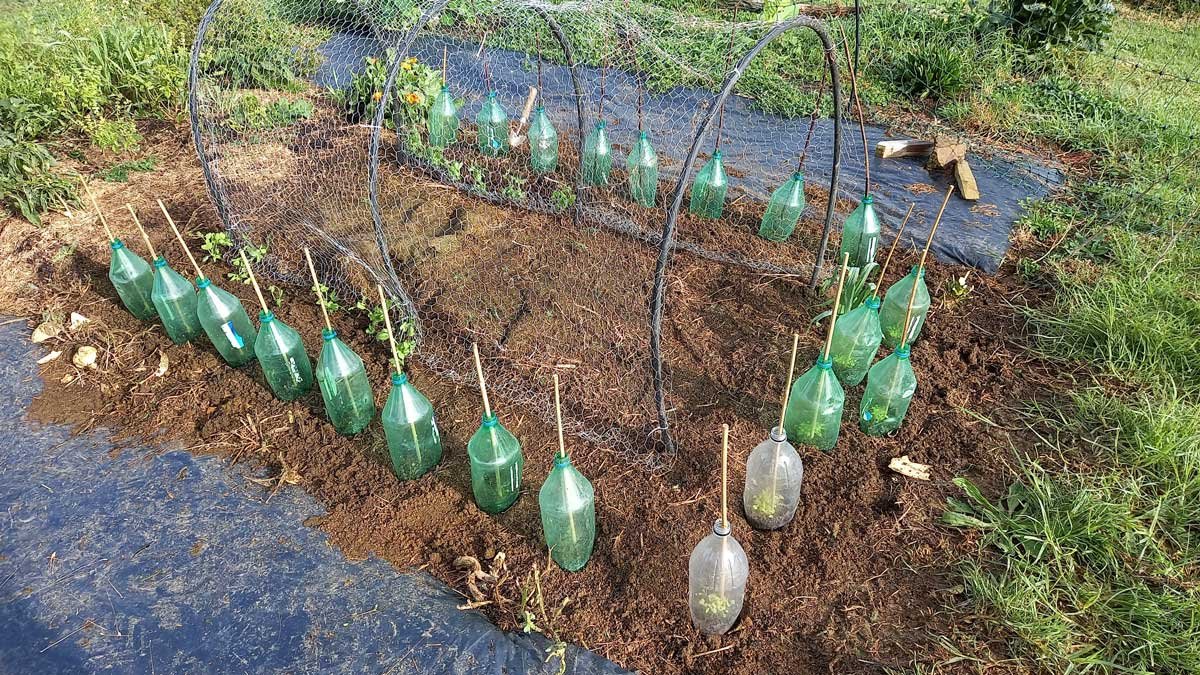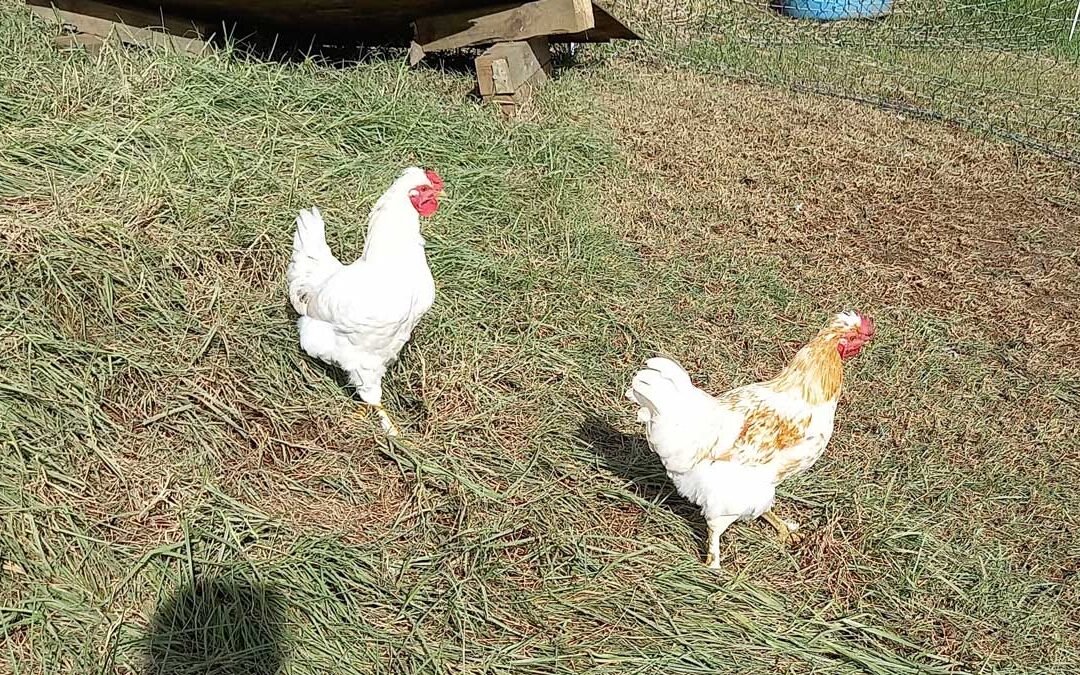A couple of months back, we adopted 7 chickens. They’ve been living in the garden, where we’ve been moving them over spent garden beds. They clean up the bed and eat all the bugs, leaving us with a fairly tidy and recently fertilised garden bed, ready to plant.

This bed is only planted because the chooks cleared it out for me. I could just come along and dump the plants in.
This keeps them separate from the main poultry flock. Unfortunately, the term “pecking order” is a real thing that originated from chickens. They have hierarchies, and anyone joining the flock has to spend some time getting picked on and learning their place in the pecking order.
As someone who got bullied in school, it’s a slightly triggering thing to watch. Chooks are vicious. Even though all our adult chooks are a “more docile” breed, they aren’t all that docile when it comes to working out the pecking order. So the new chooks have been kept in a different area until they’re big enough to stand up for themselves.
One of the things I mentioned in our last blog is that we’re expecting roosters from this lot of chickens. That’s new for us as up til now, we’ve been buying sexed female pullets. Statistically, 3 or 4 of them should be boys. Sure enough, a few weeks ago we began to hear the sounds of baby roosters. When it started, it sounded more like a dove doing a rooster impression. But more recently, the boys (plural) have really begun to find their voices.
The small coop we’ve had them split off into has been getting more crowded as the birds grew larger. We noticed some were growing faster than others and deduced that the bigger ones were probably the boys. And so we began observing them.
Once we identify which one is crowing in the garden, they go off to join the main flock. We’re up to 3 roosters. A white one, a white-and-ginger one, and a black-and-white one.
Having done a bit of research and reading, we have too many roosters. Our main coop is built for 12 chickens, which is our biggest limiting factor. We can’t have more than 12 chickens without getting another coop. And the ratio for roosters is one dude for up to 12 females.
Having a rooster has some benefits, and some drawbacks. They protect the flock from predators and they enable baby chickens, but they can also be a bit rough on the girls. Not only can we only have one rooster, it needs to be the right rooster.
So once they’re in the main pen, the next step is to allow the chickens to pick a dude. By moving them over into the main coop, they have a chance to sort out who the winner is for themselves.
So far the girls don’t seem to like any of them. They give them a peck whenever they run into them, and they get repeatedly and noisily kicked out of the chicken house as it starts to get dark. Apparently our ladies don’t need no man.

A well-timed photo if I ever I saw one. The definition of henpecked. The chicken on the right is defending the pile of weeds (and slugs and worms) I just dumped in from the garden.
Thankfully, the poultry have a very large run at the moment. We’ve used the poultry fences to let them roam around a native planting installed by the former owners a few years ago. It’s a good size and the trees are at no risk from the birds. The grass is waist-height on me, so it gives the new birds some space to hide from the old ones.
This process is likely to take some time. It took months (and a couple of deaths) for the new chicks to properly integrate with our older ones. I imagine it might be spring before we work out which rooster is staying.
The roosters that have to go will most likely be buried under a newly-planted tree, as is our usual procedure. I’ve got 4 olives that will need planting near the coop this spring. We’ll keep their deaths quick and humane – but it’s what we’ll have to do. It’s possible – if not downright likely – that the roosters will kill each other if they’re penned up like this as they get older. In the wild, one would win the flock of girls and the rest would go off to start or join a rooster colony.
We have no need for a rooster colony, and three roosters crowing is quite the cacophony in the early morning. Many people locally dump their extra roosters on the roadside. There’s a couple of semi-wild colonies in our area. But that causes entirely new issues, and they’re regularly poisoned by local authorities to reduce numbers. Dumping the roosters is not a valid option for us, and it ends the same way anyway. Given how easy it is to pick a rooster up off the roadside, even trying to sell them is more trouble than it’s worth.
Thankfully, neighbours are less of a concern due to the fact we live a decent distance from each other. Our land is classified as Rural Production in the District Plan, which means legally we’re OK to have them as well. So we have the time to let things work themselves out. Being a farmer – no matter the scale – is constantly weighing life and death in one’s hands. And that’s something I try to be honest about in this blog. It’s not easy, and I don’t love it. And I don’t think any farmer does.
I’m not breeding for anything special: I simply want the girls to be happy and safe, so we can continue to enjoy fresh eggs well into the future. I’ve been half-wanting a rooster for well over a year, and now I have (at least) three. That presents new challenges, but giving nature time to work itself out is a luxury we get to allow ourselves.


